Introduction: One Tongue, Many Personalities

Among all yakiniku cuts, beef tongue is one of the most fascinating. Although it is a single organ, each section has a completely different texture and flavor. The tip is firm and chewy, while the root becomes softer and richer. The muscle fibers, fat content, and bite change dramatically depending on the location-sondosune@gmail.com much so that you might wonder, “Is this really all the same tongue?”
A whole beef tongue weighs over 1 kg, yet most people only see thinly sliced packs at supermarkets. That’s why the true depth of this cut often goes unnoticed. Professional chefs say, “The quality of beef tongue depends entirely on how the whole piece is handled,” because slicing direction and location drastically affect taste.
Beef tongue is a cut packed with surprises-full of personality, complexity, and depth. Once you understand these differences, your enjoyment increases dramatically.
Chapter 1: Four Distinct Sections of Beef Tongue
1. Tongue Tip – Firm, Wild, and Flavorful
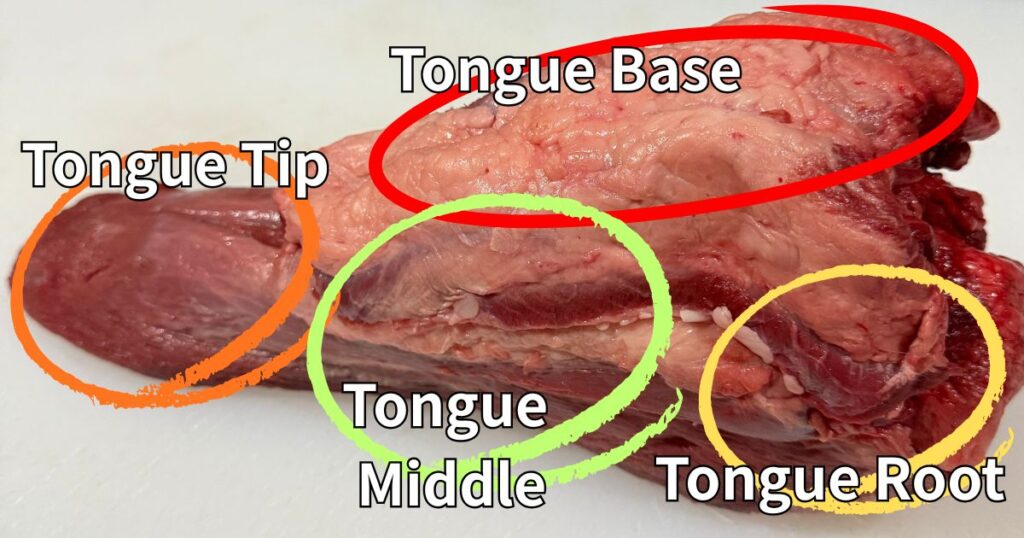
The tip of the tongue is firm with thick muscle fibers. Many supermarket sliced tongue packs use mainly this section, which is why some people think tongue is “tough.” However, when sliced thin and grilled quickly, the tip delivers a sharp, savory flavor and an enjoyable chew.
2. Tongue Middle – Balanced, Tender, and Aromatic

The center of the tongue is the most balanced section-softness, aroma, and fat content are all moderate. Most restaurant-style “tan-shio” (salted tongue) is cut from this area. It is the most universally loved and an ideal introduction to beef tongue.
3. Tongue Root – Rich, Tender, and the True Star
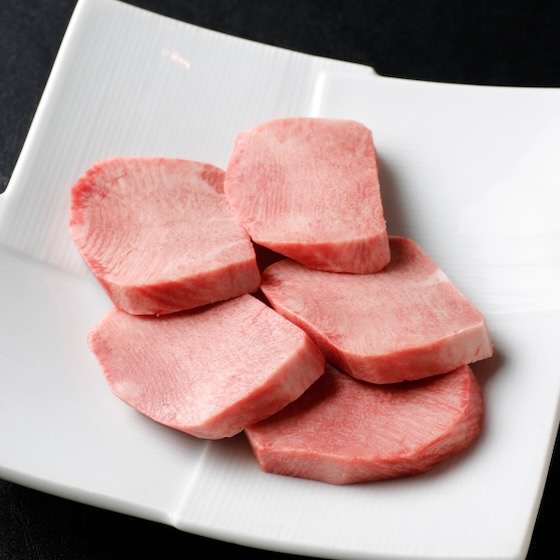
The root is the softest and most flavorful part. In wagyu cattle, the fat in this area becomes extremely fine and aromatic, making thick-cut slices especially enjoyable. This section shows the full potential of beef tongue.
4. Tongue Base (Underside) – Unique Aroma with Deep Umami
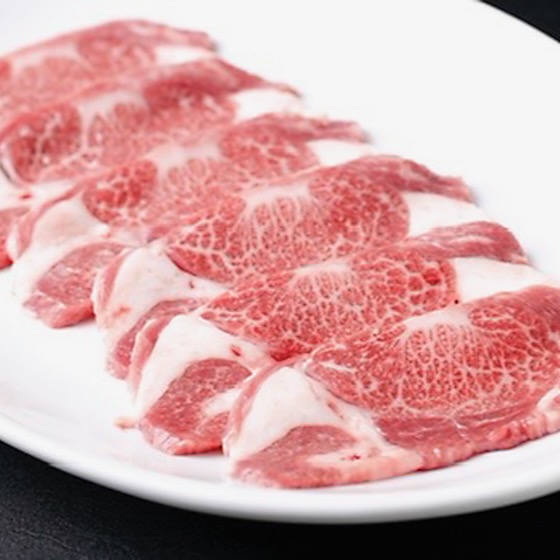
On the underside of the tongue, near the jaw, two large blood vessels run through the meat. For imported beef, this area often carries a stronger drip smell-a slightly metallic, blood-like aroma caused by pooled juices.
However, the fat here is surprisingly light, and the texture is pleasantly springy. Many fans love this section for its bold character and deep, concentrated flavor.
1. Why Most Tongue You See Is Imported: The Reality of Supply

The beef tongue you see at supermarkets and in many yakiniku restaurants in Japan is, in most cases, imported. The reason is simple: there is an extremely limited supply of wagyu tongue.
From one cow, you only get one tongue. And within that single tongue, only a small portion is suitable for yakiniku-style grilling. Despite this, beef tongue has always been a very popular cut in Japan, both at home and when eating out.
Because the amount of wagyu tongue is so limited while demand remains consistently high, the supply simply cannot keep up. In other words, the basic structure of the market is that there is never enough wagyu tongue to meet demand.
As a result, wagyu tongue almost never appears in normal distribution channels. It is not something that just “shows up” in the general market. Instead, it is treated as a special product, handled only within a limited circle of trusted relationships.
2. Why Money Alone Cannot Buy Wagyu Tongue – And the Same Is True for Wagyu Harami
Many people imagine that if you are willing to pay a high enough price, you can buy wagyu tongue. In reality, that is not how it works. Even if you offer a lot of money, you cannot simply secure a stable supply of it.
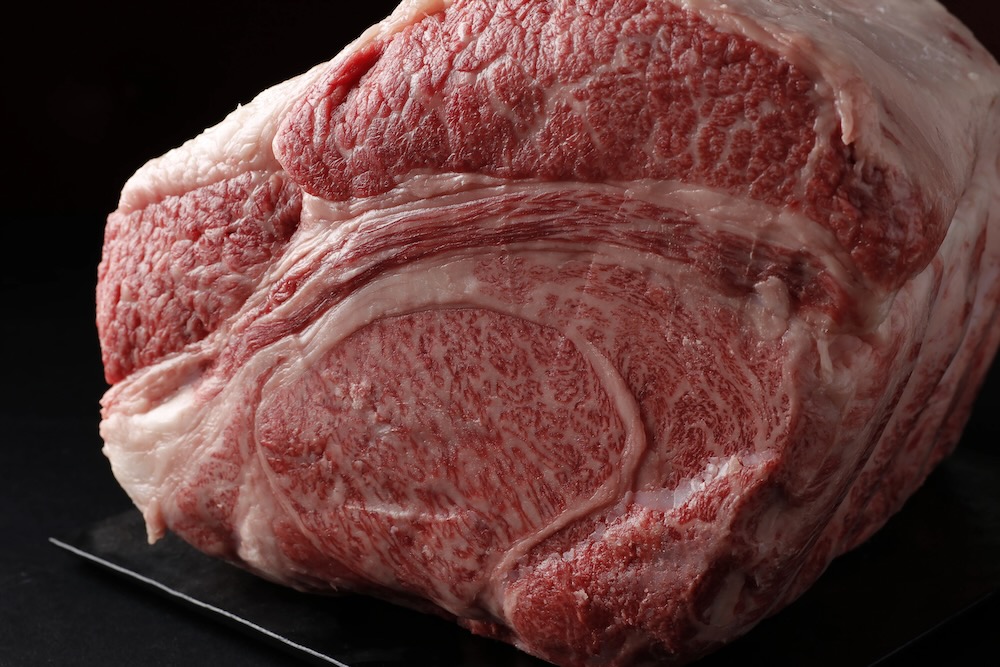
Of course, trust between butcher and restaurant is important. But there is an even more fundamental reason behind how wagyu tongue is distributed: for the butcher, beef tongue itself does not generate much profit.
A tongue is quite light in weight, so even if it is sold at a high price, the total profit is small. What really supports the butcher’s business is not the tongue, but the restaurants that buy a lot of whole carcasses from them.
Because of this, butchers treat wagyu tongue as a kind of “privilege” for the restaurants that regularly purchase large amounts of carcass meat and support their business. In other words, wagyu tongue is not sold to just anyone with money, but is given priority to yakiniku restaurants that are serious about buying whole animals, not just popular parts.

Exactly the same structure applies to wagyu harami (outside skirt). Harami is also an extremely small, rare part from each animal. Since there is so little of it, butchers again choose to allocate it first to restaurants that buy a lot of carcasses and have a long, stable relationship with them.
This is why, within the yakiniku world, people say that “a restaurant that serves top-quality tongue and harami is a true, serious yakiniku restaurant.” It is not only about taste. Being able to serve these cuts at all is proof that the restaurant has earned the trust of its suppliers and has the track record and commitment to buy whole carcasses, not just the easy-to-sell parts.
3. Wagyu Tongue vs. Imported Tongue – Completely Different Ingredients

Wagyu tongue and imported tongue may come from the same part of the cow, but their taste, aroma, texture, and even how they should be cooked are completely different. The biggest differences come from the quality of fat and how the aroma rises when grilled.
Wagyu tongue has fine, sweet fat and a rich aroma that spreads gently. Imported tongue, on the other hand, is leaner, sharper in flavor, and offers a more wild, meaty character. From the moment they hit the grill to the final aftertaste, they behave like entirely different ingredients.
Wagyu Tongue – Softness, Aroma, and Sweet Fat
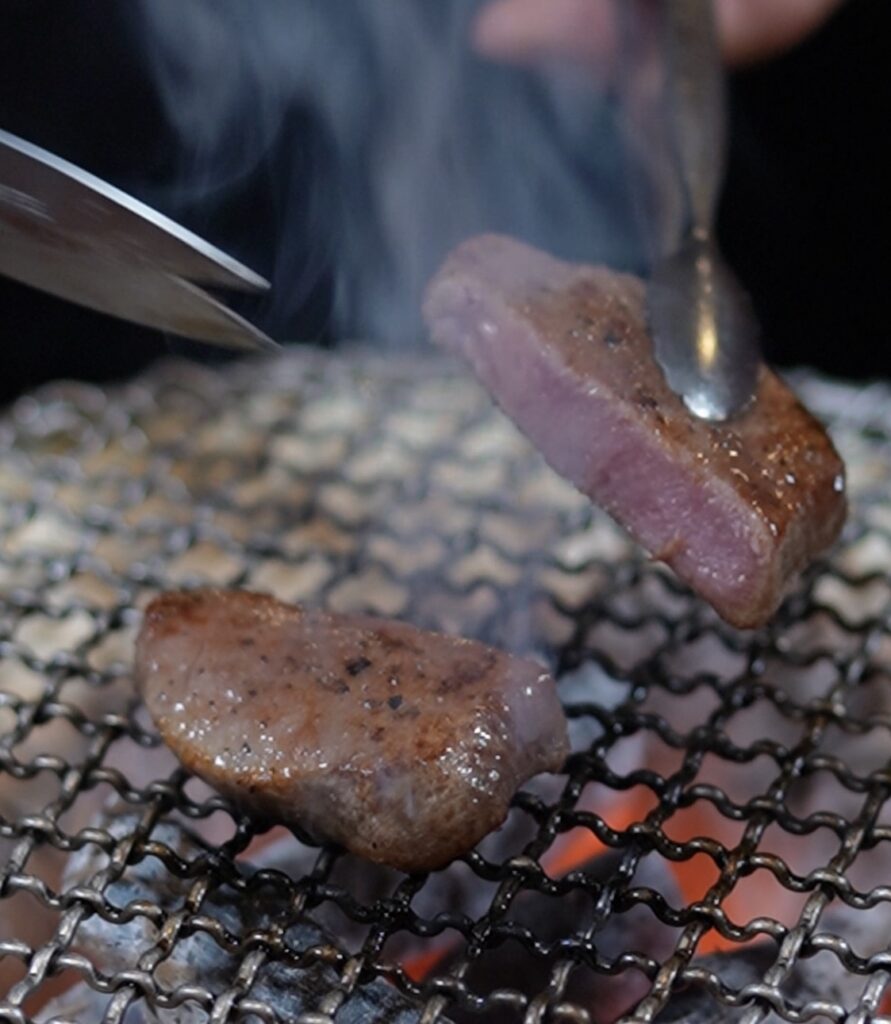
Wagyu tongue has fine muscle fibers, making it incredibly tender even when cut thick. The “tongue root” (the fattest part) is the highlight of wagyu tongue-rich aroma, sweet fat, and exceptional tenderness. Simply grilling it brings out remarkable depth of flavor.
Imported Tongue – Lean Flavor and a Satisfying Chew
Imported tongue is leaner, offering bold flavor and a firm bite that grows more delicious as you chew. It pairs exceptionally well with thin-sliced salt grilled tongue and clearly expresses the differences between the front, middle, and root sections of the tongue.
Different Sections, Different Personalities
A whole tongue is like four completely different meats connected together. Each section has its own taste, texture, and aroma.
● Tongue Tip
Chewy, wild, and full of lean flavor. This part brings out the strengths of imported tongue.
● Middle Tongue
Balanced in fat, aroma, and tenderness. The classic “standard” yakiniku tongue.
● Tongue Root
The star of wagyu tongue. Extremely fine fat, rich aroma, and deep sweetness. The only part that truly supports thick cuts.
● Tongue Underside
Wagyu tongue underside is surprisingly delicious, with deep umami. Imported tongue underside, however, contains more blood vessels and develops a much stronger smell.
The Quality Gap in Imported Tongue and the Source of Smell
Imported tongue varies greatly in quality. Low-priced imported tongue shows clear differences depending on the section.
● Parts with Minimal Smell (Root → Front Middle)
These areas have less odor and deliver a straightforward lean taste.
● Parts with Stronger Smell (Middle Front → Tip)
As the muscle becomes leaner and more fibrous, a noticeable “drip smell”-the metallic smell from pooled blood-appears.
● Tongue Underside
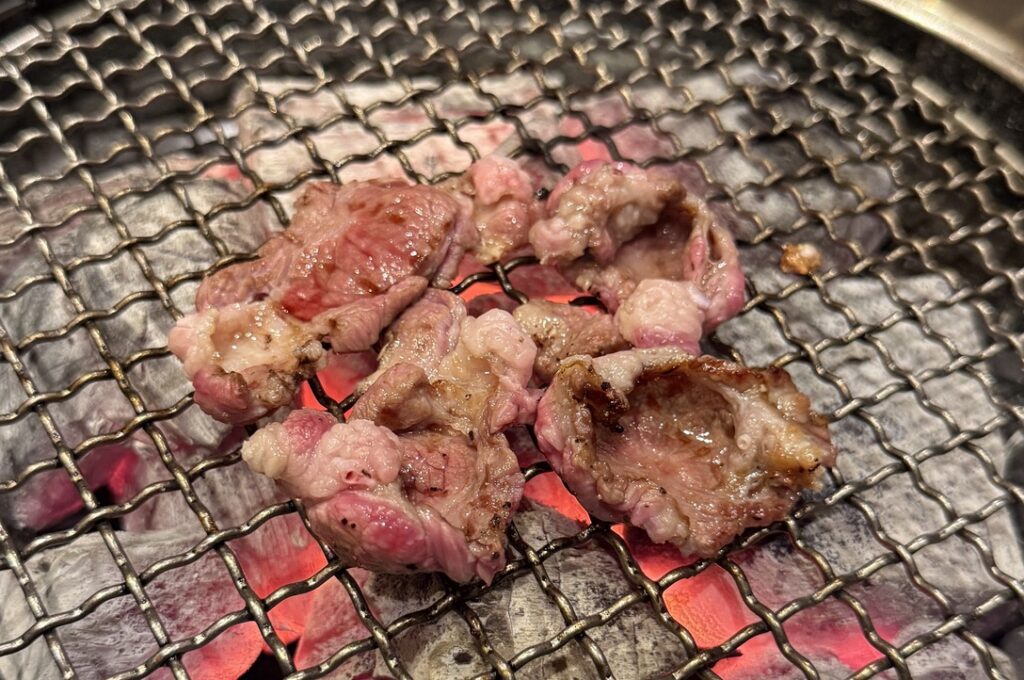
This is where the biggest difference between wagyu and imported tongue appears. Wagyu is rich and tasty, while imported tongue has a strong, often metallic odor due to the blood vessels.
Even high-quality imported tongue cannot eliminate this unique aroma completely-it’s part of the nature of imported tongue.
Thick-Cut Wagyu Tongue Root – Delicious but Difficult
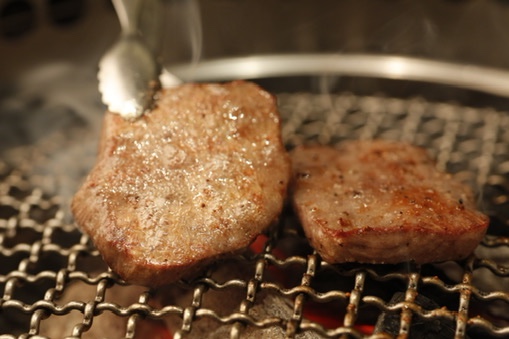
Wagyu tongue root is outstanding both thick and thin. However, thick slices are surprisingly difficult to grill correctly. Because wagyu fat melts easily, the outside can crisp while the inside remains unpleasantly rare and “gummy” if the grilling technique is not precise.
To grill it perfectly, the cook must balance surface browning, internal temperature, and fat rendering. A person who can grill thick-cut tongue root correctly is essentially at professional skill level.
Thin-Sliced Tongue Root – For Advanced Yakiniku Lovers
Thin-sliced wagyu tongue root is a playground for yakiniku experts. It can be grilled one-sided for a crispy finish, lightly on both sides for aroma, or left rare to enjoy the sweet, delicate fat. Being able to control the grilling of thin-sliced tongue root marks someone as a true yakiniku master.
Even Imported Tongue Can Be Thick-Cut at the Root
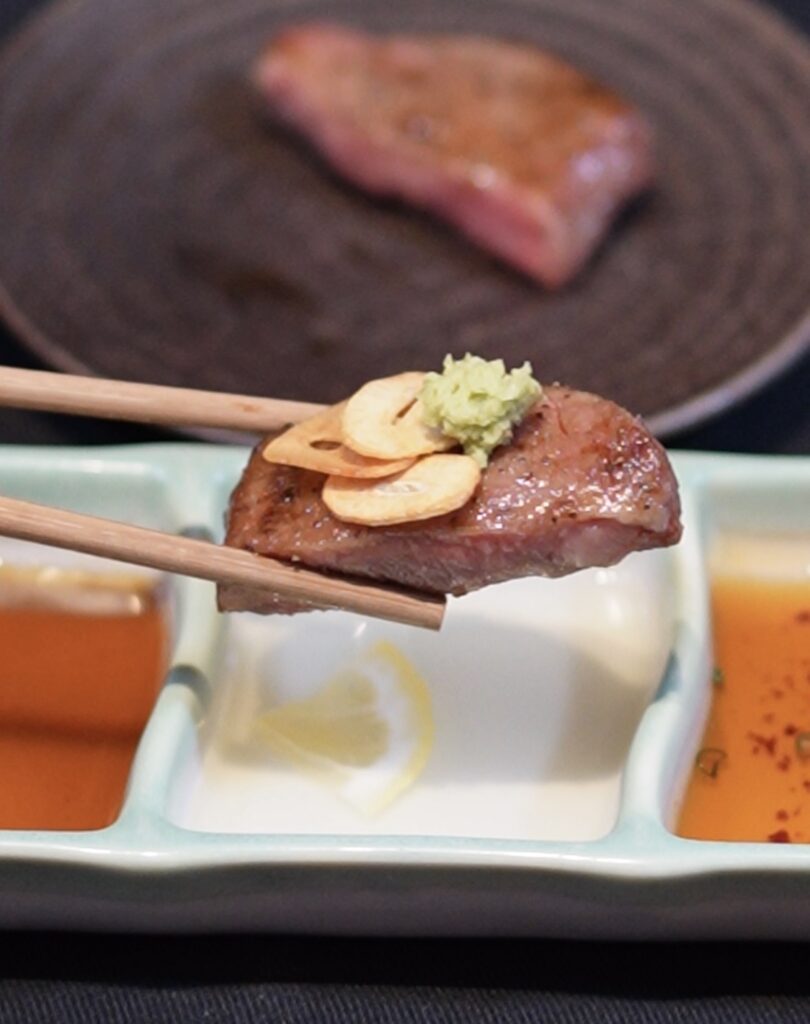
Surprisingly, the root section of imported tongue can also be enjoyed as a thick cut-only the fatty core, after trimming the lean outer layer. But just like wagyu, it must not be left raw in the center.
With careful trimming and proper heat control, imported tongue root offers a delicious thick-cut experience despite being leaner overall.
4. Imported Beef Tongue: A Delicious Cut with One Big Challenge – Drip Odor

Imported beef tongue is a flavorful cut, but it comes with a major challenge: it releases a large amount of blood “drip,” which quickly develops a distinct odor. This drip odor is the main reason imported tongue is often considered difficult to handle.
What makes it even more troublesome is that the odor begins to appear even on the day it is delivered. As time passes, the drip increases, and the smell becomes stronger. This is not simply a matter of freshness – it is a structural characteristic of imported beef tongue.
Different Parts of the Tongue Produce Different Levels of Odor
While imported tongue in general produces more drip, certain sections are especially prone to strong smells:
● Tongue Tip
The muscle fibers are thick and lean, making the blood odor more noticeable.
● Front Side of the Middle Tongue
As the lean content increases, drip odor becomes stronger over time.
● Underside of the Tongue
The underside contains many blood vessels, making it the part where drip odor becomes the strongest.
Meanwhile, the tongue root and the rear-middle section tend to have milder odor and are easier to work with, even in imported products.
The Skill of a Yakiniku Restaurant Shows in How They Manage Drip Odor
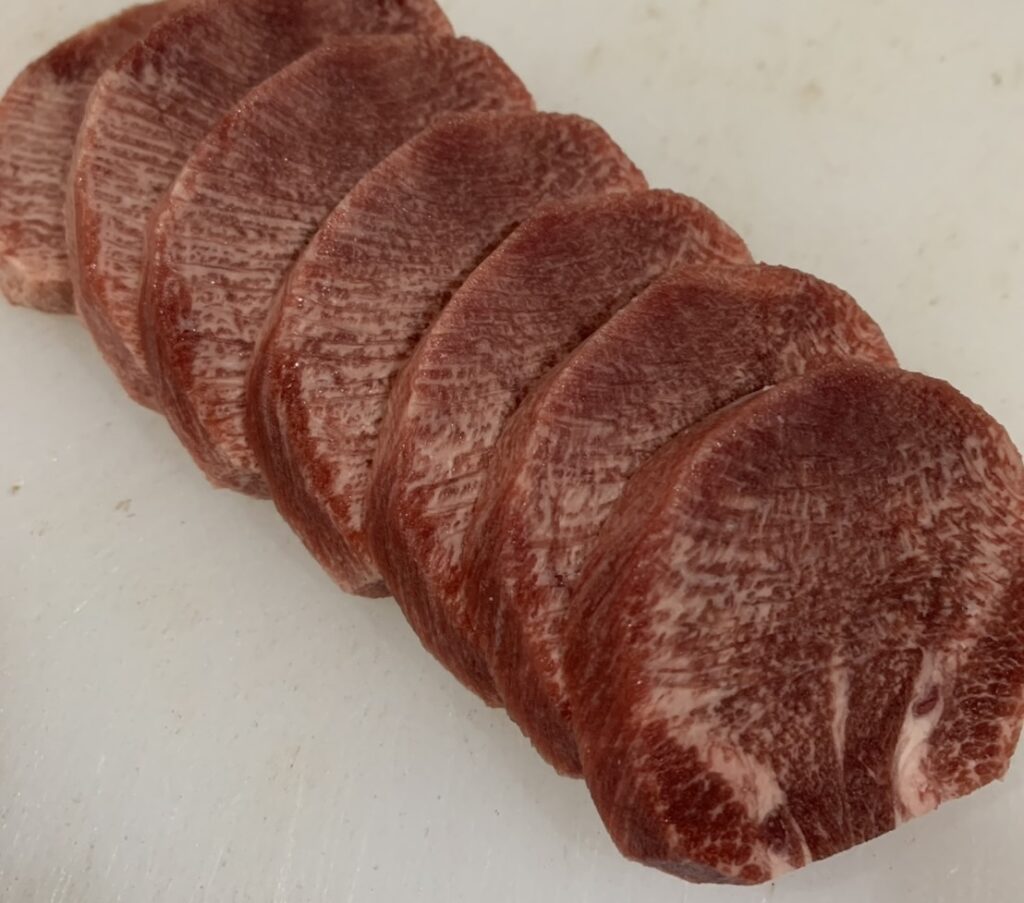
Even if imported tongue has little odor right after being cut, leaving it for several hours allows blood to accumulate and the drip odor to intensify. For this reason, good yakiniku restaurants carefully control:
– When the tongue is cut
– How long it is exposed to air
– How precisely it is trimmed (the “saku-dori” process)
– Which parts are selected for serving
Restaurants that can consistently serve imported beef tongue without unpleasant odor demonstrate a high level of knowledge and technical skill in handling this tricky ingredient.
Why Supermarket Tongue Is Difficult to Enjoy at Home
Most beef tongue sold in supermarkets is imported and already sliced. While it sits on display, drip accumulates inside the package, coming into constant contact with air. By the time you buy it, the drip odor may have already begun to develop.
In restaurants, tongue is cut fresh and immediately served. In supermarkets, you are essentially purchasing tongue that has been sitting after being cut – which makes odor nearly unavoidable.
This is why many people feel that “supermarket tongue smells” when cooking it at home. It is not the home cook’s fault – it is a natural consequence of how imported tongue behaves once sliced.
5. How to Make Supermarket Beef Tongue Taste Great at Home
Most beef tongue sold in supermarkets is imported, which means it tends to release blood “drip” that creates a noticeable odor. However, with the right preparation and cooking method, you can drastically improve its flavor and enjoy beef tongue at home much more deliciously. Here are simple and effective techniques anyone can do.
Lightly Rinsing the Surface Removes Much of the Odor
Whole beef tongue is often washed in professional kitchens, but even pre-sliced supermarket tongue benefits greatly from a quick surface rinse. Simply rinse the surface gently and pat it dry immediately. There’s no need to soak or rub5. How to Make Supermarket Beef Tongue Taste Great at Home
Most beef tongue sold in supermarkets is imported, which means it tends to release blood “drip” that creates a noticeable odor. However, with the right preparation and cooking method, you can drastically improve its flavor and enjoy beef tongue at home much more deliciously. Here are simple and effective techniques anyone can do.
Lightly Rinsing the Surface Removes Much of the Odor
Whole beef tongue is often washed in professional kitchens, but even pre-sliced supermarket tongue benefits greatly from a quick surface rinse. Simply rinse the surface gently and pat it dry immediately. There’s no need to soak or rub-removing the drip alone reduces the unpleasant smell significantly.
For Pre-Sliced Tongue, Japanese Sake Works as a Powerful Deodorizer
When the tongue is already sliced, rinsing is harder. In this case, Japanese sake is the most effective method for eliminating odor. Moisten a paper towel with sake and dab the surface, or spray a light mist over the slices. This instantly reduces drip odor and enhances aroma when grilling.
Simple Seasoning: Garlic Paste and Salt & Pepper
Once the odor is reduced, keep the seasoning simple. A thin layer of grated garlic and a sprinkle of salt and pepper are enough to bring out the best in beef tongue. If you don’t mind it, adding just a pinch of MSG can tighten the flavor and boost umami without overpowering the meat.
How to Choose Good Beef Tongue at the Supermarket
Selecting the right pack makes a huge difference. Look for slices that are pale pink or slightly white-these come from the root or rear-middle sections, which are softer and less smelly. Avoid deep red slices or packs with very thick red meat, as these parts tend to be tougher and carry stronger odor.
Cook on Medium Heat and Flip Several Times
Imported beef tongue from the supermarket should not be cooked quickly over high heat. High heat can toughen the meat and intensify any remaining smell. Instead, cook on medium heat while flipping the slices several times to evenly remove moisture and fully cook the inside. Undercooked tongue releases the strongest odor, so proper doneness is key for good flavor.
Finish with Flavorful Condiments
Once cooked, finishing touches make a huge difference. Sesame oil with grated garlic is a classic combination. Lemon juice brightens the flavor, and wasabi pairs surprisingly well with the leaner profile of imported tongue, adding a refreshing kick.
One highly recommended option is sansho pepper. Whether powdered or whole-grain, sansho adds a fragrant, tingling freshness that pairs exceptionally well with beef tongue, taking the flavor to a refined, restaurant-quality level.
By using aroma-focused condiments, you can elevate supermarket beef tongue to a delicious and satisfying dish at home.removing the drip alone reduces the unpleasant smell significantly.
For Pre-Sliced Tongue, Japanese Sake Works as a Powerful Deodorizer
When the tongue is already sliced, rinsing is harder. In this case, Japanese sake is the most effective method for eliminating odor. Moisten a paper towel with sake and dab the surface, or spray a light mist over the slices. This instantly reduces drip odor and enhances aroma when grilling.
Simple Seasoning: Garlic Paste and Salt & Pepper
Once the odor is reduced, keep the seasoning simple. A thin layer of grated garlic and a sprinkle of salt and pepper are enough to bring out the best in beef tongue. If you don’t mind it, adding just a pinch of MSG can tighten the flavor and boost umami without overpowering the meat.
How to Choose Good Beef Tongue at the Supermarket
Selecting the right pack makes a huge difference. Look for slices that are pale pink or slightly white-these come from the root or rear-middle sections, which are softer and less smelly. Avoid deep red slices or packs with very thick red meat, as these parts tend to be tougher and carry stronger odor.
Cook on Medium Heat and Flip Several Times
Imported beef tongue from the supermarket should not be cooked quickly over high heat. High heat can toughen the meat and intensify any remaining smell. Instead, cook on medium heat while flipping the slices several times to evenly remove moisture and fully cook the inside. Undercooked tongue releases the strongest odor, so proper doneness is key for good flavor.
Finish with Flavorful Condiments
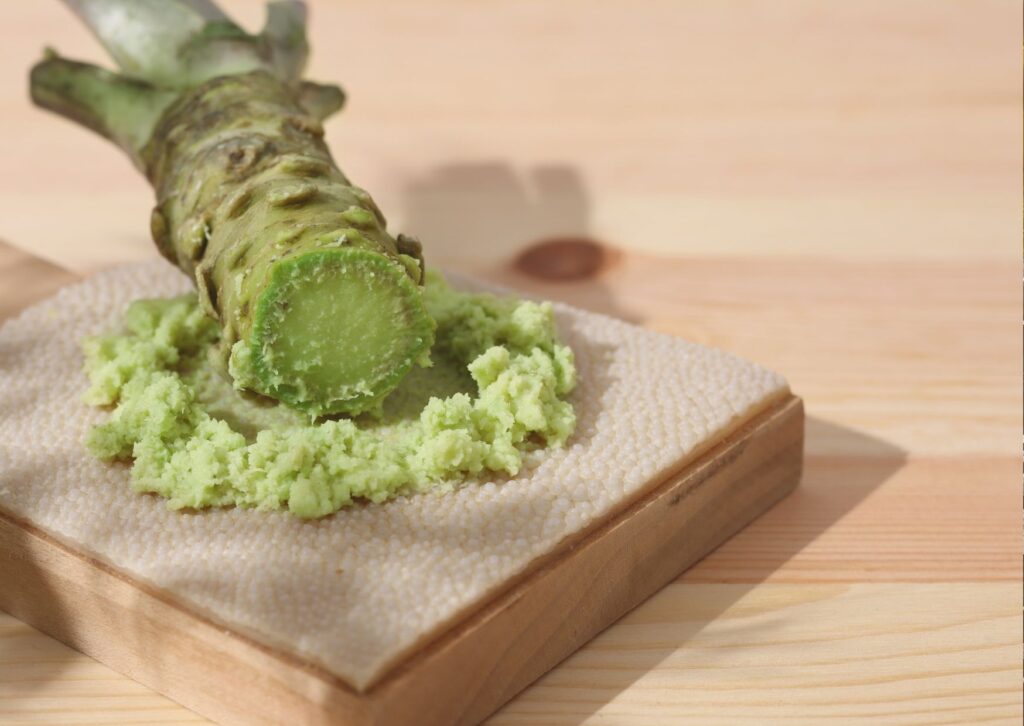
Once cooked, finishing touches make a huge difference. Sesame oil with grated garlic is a classic combination. Lemon juice brightens the flavor, and wasabi pairs surprisingly well with the leaner profile of imported tongue, adding a refreshing kick.
One highly recommended option is sansho pepper. Whether powdered or whole-grain, sansho adds a fragrant, tingling freshness that pairs exceptionally well with beef tongue, taking the flavor to a refined, restaurant-quality level.
By using aroma-focused condiments, you can elevate supermarket beef tongue to a delicious and satisfying dish at home.
6. The Correct Way to Grill Beef Tongue – The Ultimate Guide

Beef tongue is a cut where flavor depends more on how it is grilled than any other factor. Even the best-quality tongue becomes tough, smelly, or chewy if grilled incorrectly. But when grilled properly, it delivers exceptional aroma, sweetness, and a satisfying bite. Below is the definitive guide to grilling beef tongue the right way.
Undercooked Tongue Is Never Acceptable
Whether it is wagyu, imported, tongue root or thin-sliced tongue, undercooked beef tongue is always the worst outcome. The reason is simple: tongue retains blood (drip) inside the muscle fibers, and if the center is left rare, the metallic smell and drip odor become very strong, creating an unpleasant flavor and gummy texture.
Thick-Cut Tongue Must Be Cooked Slowly and Evenly

Thick-cut tongue looks luxurious, but it is very easy to ruin if cooked incorrectly. To avoid a crispy outside and raw center, follow this method:
– Start with medium to slightly high heat to create a sear.
– Reduce to medium heat.
– Flip the tongue multiple times while slowly heating the center.
– Cook until the inside is fully done.
This technique preserves tenderness, eliminates odor, and brings out the full flavor of the fat.
Wagyu Tongue Root (Gyutan Moto) – Thin Cuts Can Be Enjoyed Rare
Wagyu tongue root is exceptional. When sliced thin, it can be enjoyed rare or seared on one side only. The fine marbling melts quickly, and even lightly cooked wagyu tongue remains sweet, tender, and aromatic.
However, this applies only to thin slices. Thick-cut wagyu tongue must be cooked through the same way as imported tongue.
Imported Tongue Should Always Be Cooked Thoroughly
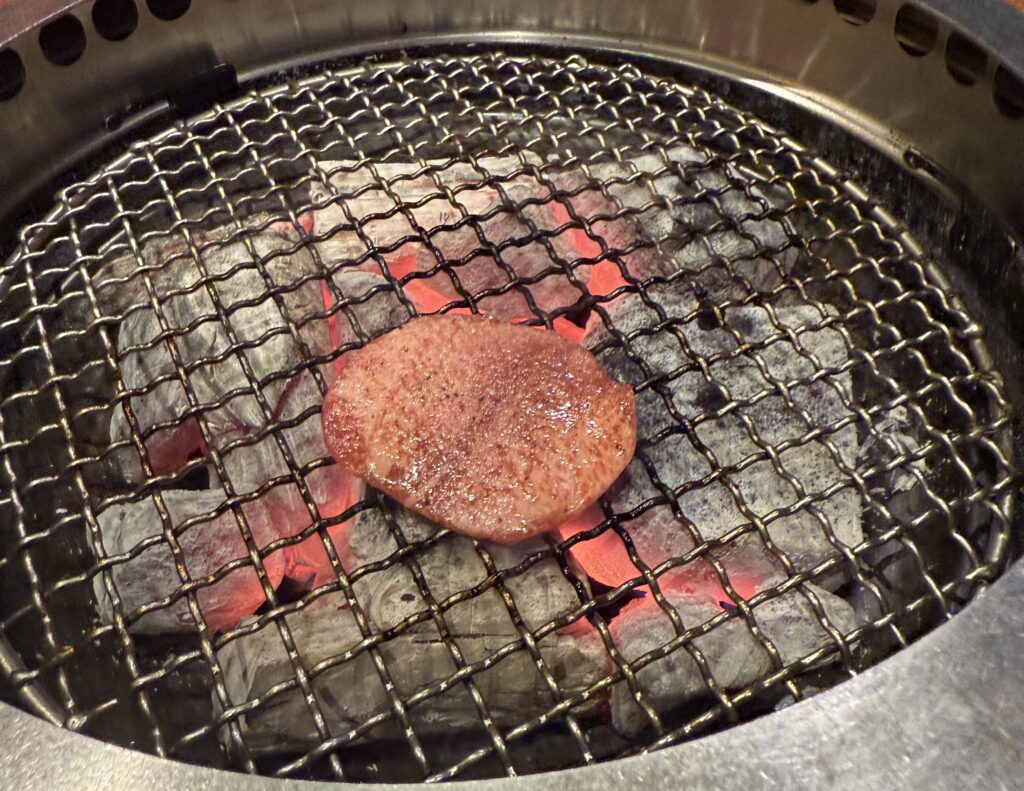
Imported tongue has more lean meat and more drip, which means it produces odor easily when undercooked. For imported tongue, the correct method is:
– Medium heat
– Flip multiple times
– Cook thoroughly until no rare parts remain
Well-done imported tongue has the best aroma, better texture, and zero unwanted smell.
Tongue Root Doesn’t Become Tough Even When Fully Cooked
A common misconception is that tongue root becomes tough when cooked too long. In reality, the root of the tongue contains extremely fine fat that prevents toughness. Even when cooked well-done, it stays tender and flavorful. This is why you can grill tongue root confidently without worrying about overcooking.
Charcoal Is Ideal – But Gas Works If You Cook Slowly

Charcoal grilling provides unbeatable aroma, searing, and radiant heat, making it the best method for beef tongue. However, gas grilling can produce excellent results as long as the tongue is cooked slowly over medium heat with multiple flips.
The Myth “Tongue Doesn’t Dirty the Grill” Is Completely Wrong
Many people believe tongue is clean and should be grilled first. In reality, tongue root contains a large amount of fat. When grilled:
– Fat drips onto the grate
– The fat burns and turns into black soot
– The grate becomes heavily blackened
If you grill other meats right after tongue root, the soot will stick to them and affect flavor. Always clean the grate or change it before grilling other cuts.
Understanding these rules will allow you to grill beef tongue at home or in a restaurant like a true expert.
Kuro5: A Premium Yakiniku Brand with Three Locations in Ikebukuro and Shinjuku Kabukicho
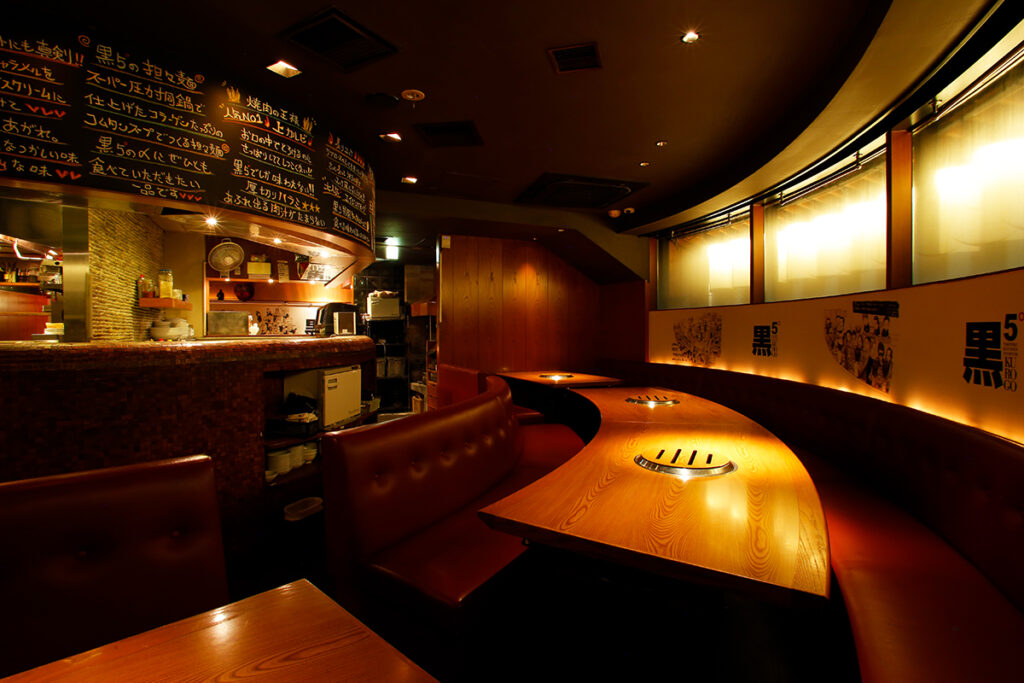
Kuro5 is a yakiniku restaurant group operating three locations in Tokyo-two in Ikebukuro and one in Shinjuku Kabukicho. Known for its uncompromising approach to quality, Kuro5 prepares its beef fresh every day at each store and serves it in a full-attend yakiniku style, where trained staff grill the meat at your table to perfection. This ensures every guest enjoys yakiniku at the highest possible level.
Kuro5’s Beef Tongue Starts with an Exceptional “Gurumuki” Preparation

Kuro5 uses only the best portions of both Japanese wagyu tongue and high-quality imported tongue. All outer red meat and odor-causing layers are carefully trimmed away, leaving only the sweetest, cleanest core. This professional preparation, known in the industry as “gurumuki”, is one of the key reasons Kuro5’s beef tongue is exceptionally tender, clean-tasting, and free from unpleasant smells.
Few Restaurants Purchase “Two Whole Wagyu Tongues” Daily per Store

Each Kuro5 store purchases two whole wagyu tongues every single day-an extremely rare practice even within the Japanese yakiniku industry. This is only possible due to long-standing trust and strong relationships with suppliers. The tongues are then broken down by skilled staff and used according to their best characteristics.
・The tongue root (tan-moto) is served as Kuro5’s signature thick-cut premium tongue.
・High-quality parts of the mid-tongue are blended into the regular salted tongue.
・This means guests may occasionally find wagyu tongue mixed into the regular tongue-an exclusive “lucky moment” unique to Kuro5.
The Hidden Masterpiece: Wagyu Tongue Root (“Tan Shita”)

One of the must-try items at Kuro5 is the wagyu tongue root (tan shita). Comparable to the “engawa” of flounder, this part is incredibly flavorful-crispy, tender, juicy, yet surprisingly refreshing. Tongue experts often say, “The most delicious part of beef tongue is the tan shita,” and Kuro5’s preparation makes this especially true.
Premium Imported Tongue-Upgraded to a Completely Different Level
Kuro5 selects only imported American beef tongues with excellent marbling and superior fat quality. These tongues also undergo the same gurumuki trimming as wagyu, eliminating the drip odor commonly found in imported beef tongue. The result is a remarkably clean, tender, and flavorful imported tongue that surprises even experienced yakiniku fans.
Imported Tongue Root Reinvented as a Signature Braised Dish
Imported tongue root tends to hold stronger odors when grilled directly, but Kuro5 transforms it through a unique preparation method into a rich, sweet-and-savory braised tongue dish. It pairs wonderfully with both rice and alcoholic drinks, and has become one of the restaurant’s most beloved secret menu items.
Full-Attend Yakiniku Ensures Perfectly Grilled Thick-Cut Tongue
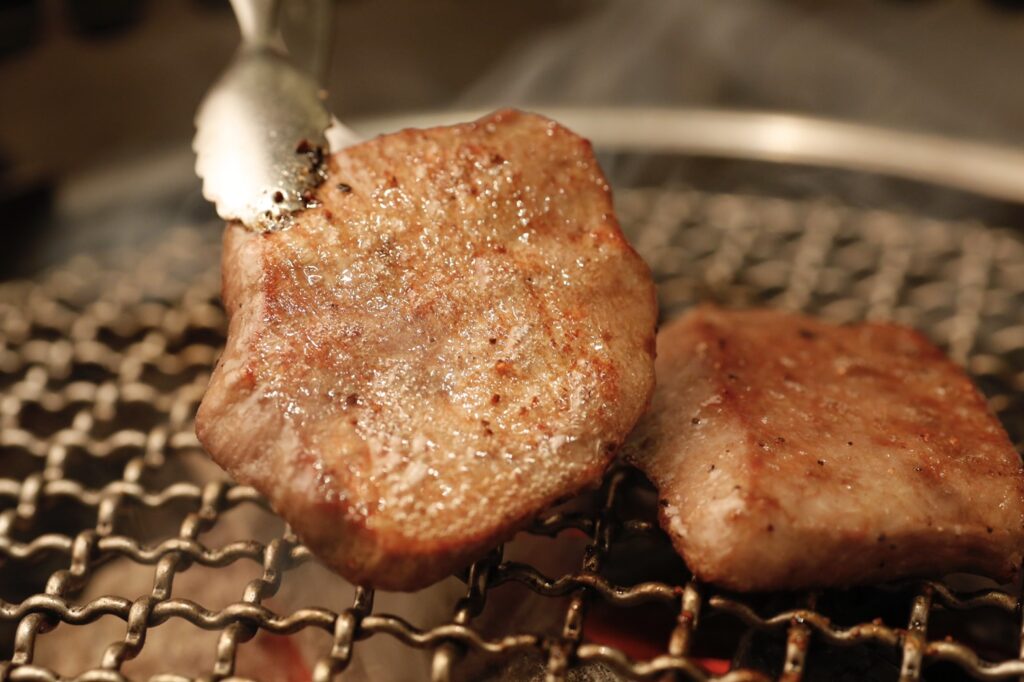
Because Kuro5 grills the meat for you through its full-attend service, even the challenging thick-cut tongue root is cooked perfectly every time. Beef tongue varies dramatically depending on how it is grilled, but at Kuro5, you can enjoy every cut-especially premium thick-cut tongue-in its ideal state without any risk of overcooking or undercooking.
7. Summary
Beef tongue is a uniquely complex cut where flavor changes dramatically depending on the part, preparation, drip management, and grilling technique. Both wagyu and imported tongue have their own strengths, and with proper knowledge, each can be enjoyed at its best.

Ultimately, the true taste of beef tongue is determined by how carefully it is prepared and how correctly it is handled. Skill and attention make all the difference.
The more you learn about beef tongue, the more you begin to see the craftsmanship and dedication behind it. We hope this article adds new insight and enjoyment the next time you experience beef tongue.
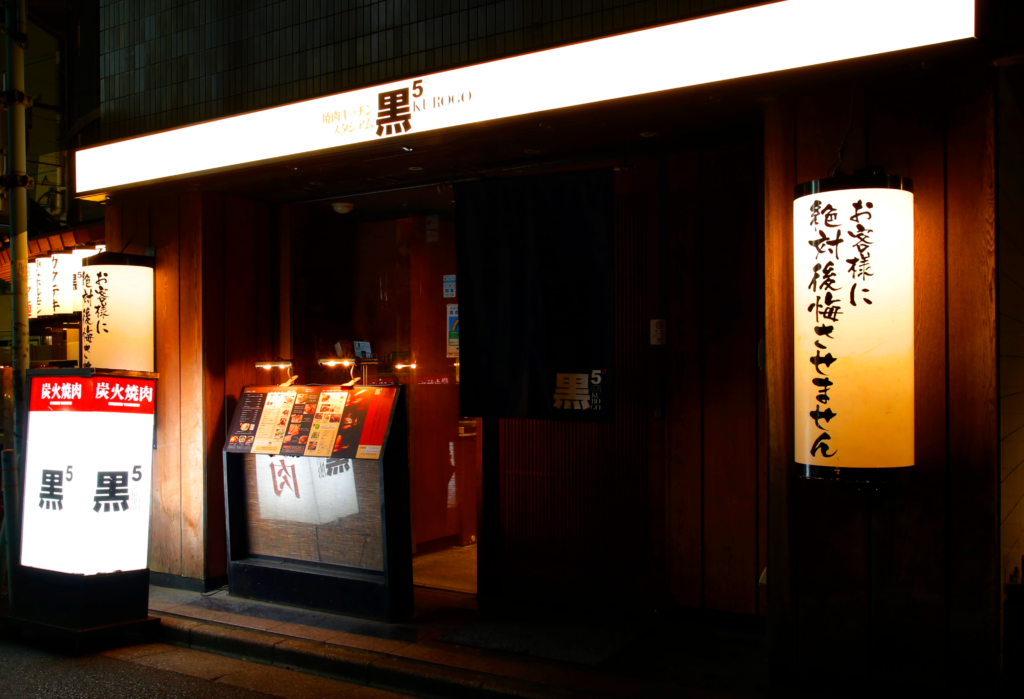
Wagyu Yakiniku Kuro5
IKEBUKURO Main Restrant
1F Shima 100 building ,2-46-3, Ikebukuro, Toshima-ku , Tokyo 171-0014
https://en.kuro5.net/restaurant/honten
Wagyu Yakiniku Kuro5
IKEBUKURO East Exit Restrant
2F Need Building, 1-42-16 Higashi-Ikebukuro, Toshima-ku, Tokyo 170-0013
https://en.kuro5.net/restaurant/higashiguchi
Wagyu Yakiniku KURO5
Kabukicho
1F Sankei Building, 2-21-4 Kabukicho, Shinjuku-ku, Tokyo
https://en.kuro5.net/restaurant/kabukicho
Official Instagram: @kuro5yakiniku





